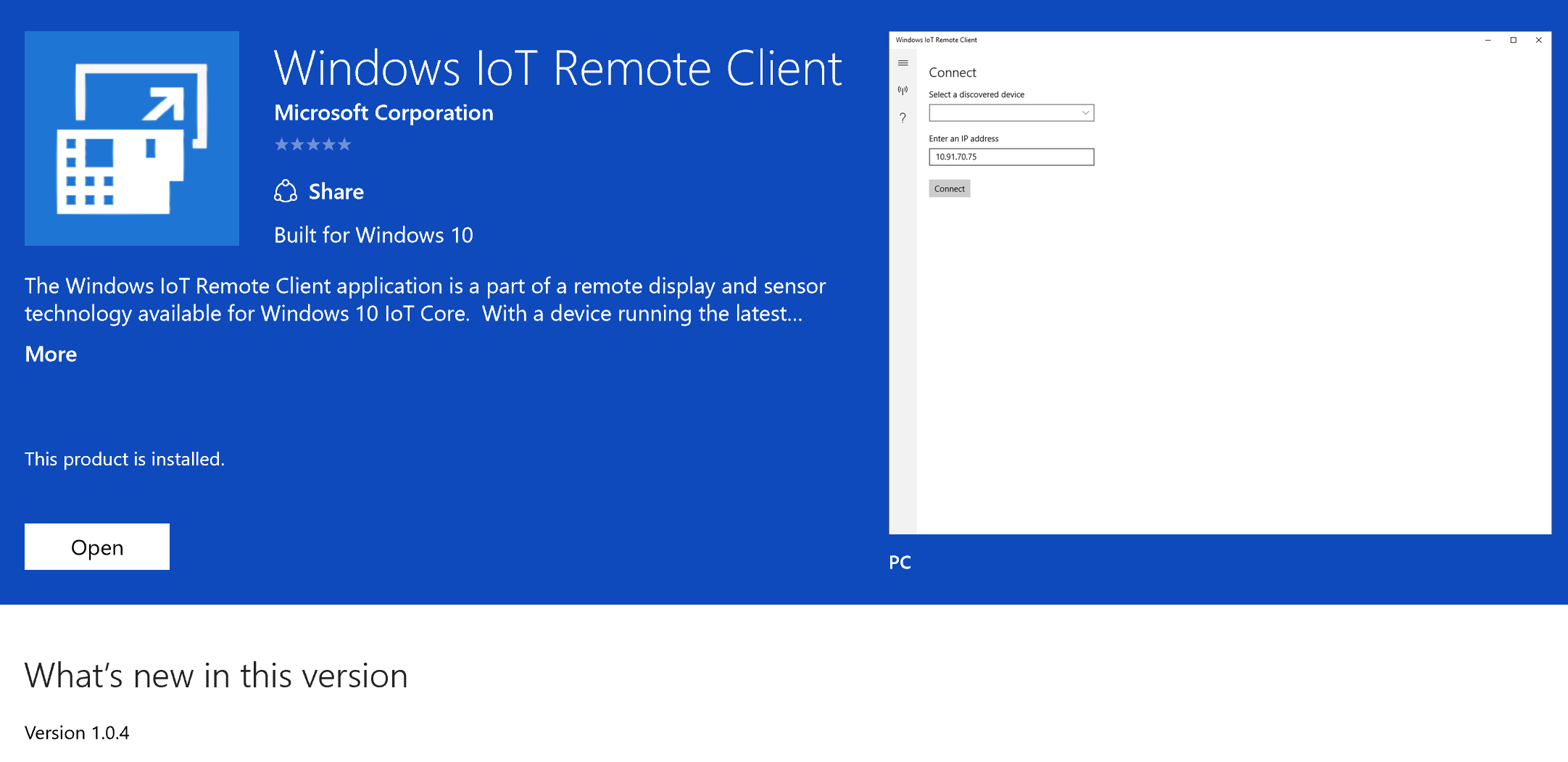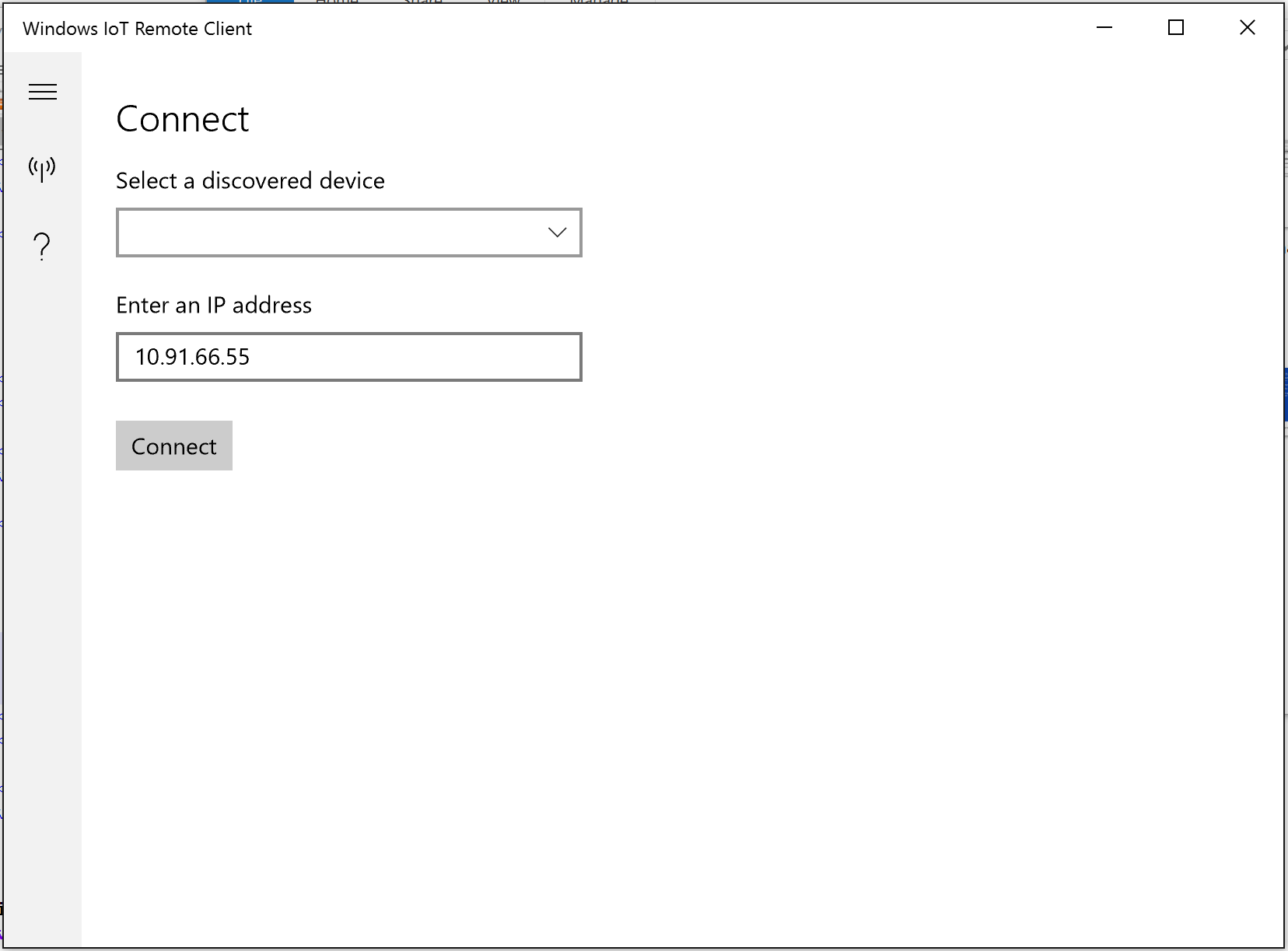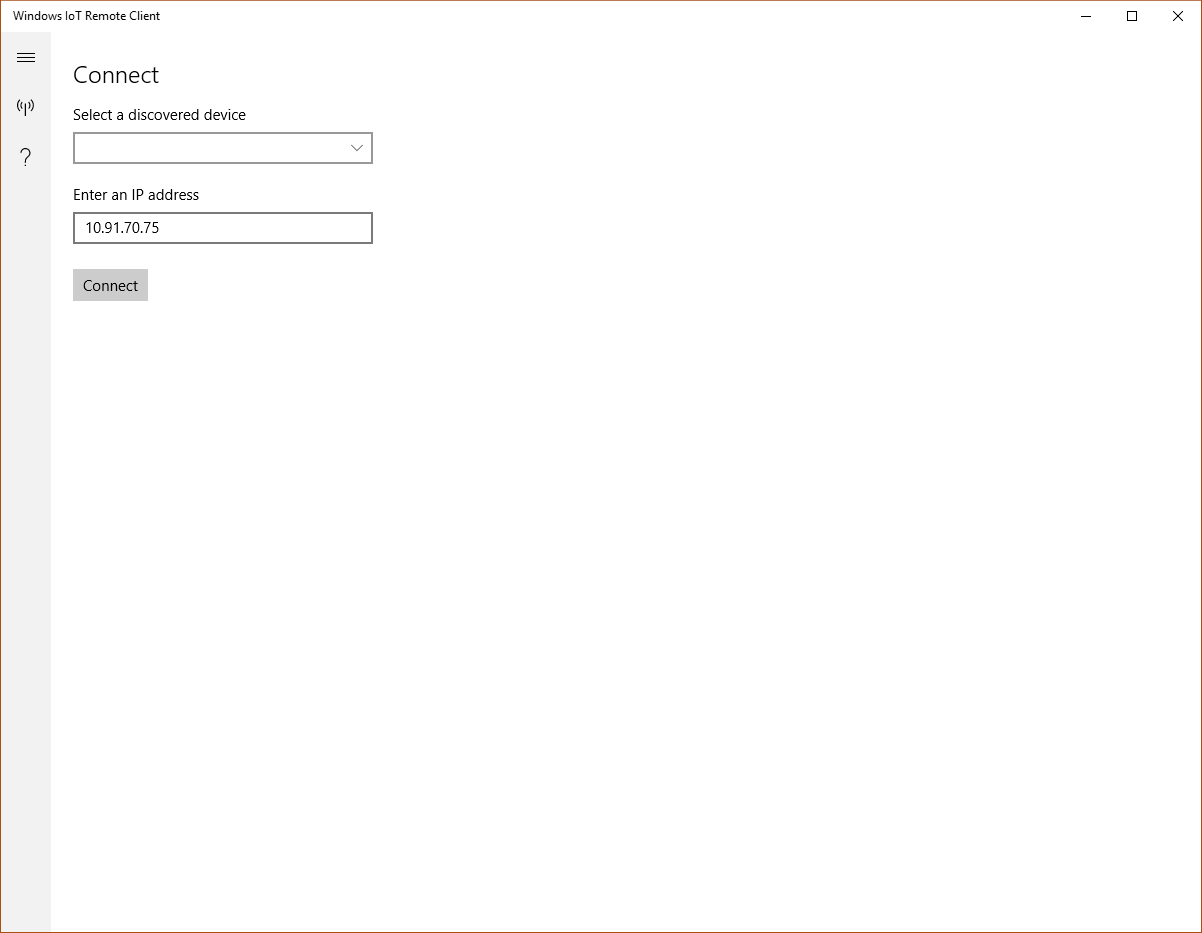Windows IoT Remote Server has become a vital solution for businesses and developers looking to enhance their Internet of Things (IoT) infrastructure. With the increasing demand for remote management capabilities, this technology offers an innovative way to manage devices and applications from afar. In this comprehensive guide, we will explore everything you need to know about Windows IoT Remote Server, its benefits, features, and implementation strategies.
In today's interconnected world, IoT devices are playing an increasingly important role in various industries. From smart homes to industrial automation, the ability to remotely manage these devices is crucial for ensuring efficiency and reliability. Windows IoT Remote Server provides a powerful platform for achieving this, making it an essential tool for modern businesses.
As we delve deeper into this topic, we will examine how Windows IoT Remote Server can revolutionize the way you manage your IoT ecosystem. By understanding its features and capabilities, you can harness its full potential to optimize your operations and stay ahead of the competition.
- Sdmoviespointzone Your Ultimate Destination For Movie Entertainment
- Hd4u Download Your Ultimate Guide To Highdefinition Content
Understanding Windows IoT Remote Server
What is Windows IoT Remote Server?
Windows IoT Remote Server is a specialized version of the Windows operating system designed specifically for Internet of Things (IoT) applications. It enables developers and businesses to deploy, manage, and monitor IoT devices remotely, ensuring seamless connectivity and efficient operation. This platform is built on the robust foundation of the Windows ecosystem, offering a secure and reliable environment for IoT deployments.
Key features of Windows IoT Remote Server include:
- Remote device management
- Secure communication protocols
- Scalability for large-scale IoT networks
- Integration with Azure IoT services
Why Choose Windows IoT Remote Server?
There are several compelling reasons why businesses opt for Windows IoT Remote Server as their IoT management solution. First and foremost, it offers unparalleled compatibility with existing Windows-based systems, allowing for seamless integration into existing infrastructures. Additionally, its robust security features and support for modern cloud services make it an ideal choice for organizations looking to future-proof their IoT deployments.
- Mario Banchero The Rising Star In The Nba
- Sam Heughan A Comprehensive Look At The Talented Actors Life Career And Impact
Key Features of Windows IoT Remote Server
Remote Management Capabilities
One of the standout features of Windows IoT Remote Server is its ability to manage IoT devices remotely. This allows administrators to perform tasks such as firmware updates, configuration changes, and troubleshooting without needing physical access to the devices. By streamlining these processes, businesses can save time and reduce operational costs significantly.
Enhanced Security Protocols
Security is a top priority in any IoT deployment, and Windows IoT Remote Server provides robust protection against potential threats. It incorporates advanced encryption methods, secure boot processes, and regular security updates to ensure that your devices remain protected at all times. Additionally, its integration with Microsoft Defender for IoT adds an extra layer of defense against cyberattacks.
Benefits of Using Windows IoT Remote Server
Improved Efficiency
With Windows IoT Remote Server, businesses can achieve greater efficiency in managing their IoT ecosystems. The ability to monitor and control devices from a centralized location reduces the need for on-site interventions, freeing up valuable resources for other tasks. This leads to faster response times and improved overall performance of the IoT network.
Cost Savings
Implementing Windows IoT Remote Server can result in significant cost savings for organizations. By minimizing the need for physical maintenance and reducing downtime, businesses can allocate their budgets more effectively. Additionally, the scalability of the platform allows for cost-efficient expansion of IoT networks as demand grows.
Implementation Strategies for Windows IoT Remote Server
Planning Your IoT Deployment
Before deploying Windows IoT Remote Server, it is essential to carefully plan your IoT implementation strategy. This involves identifying your specific requirements, selecting appropriate hardware and software components, and designing a network architecture that supports your goals. Consulting with experienced IoT professionals can help ensure that your deployment is successful and meets your expectations.
Setting Up Windows IoT Remote Server
The setup process for Windows IoT Remote Server involves several key steps, including installing the operating system, configuring network settings, and establishing secure connections to your IoT devices. Microsoft provides comprehensive documentation and support resources to guide you through this process, ensuring a smooth and hassle-free experience.
Integrating Windows IoT Remote Server with Azure
Overview of Azure IoT Services
Azure IoT services offer a range of tools and capabilities that enhance the functionality of Windows IoT Remote Server. These include device provisioning, data analytics, and machine learning capabilities, all of which can be leveraged to create intelligent IoT solutions. By integrating Azure with Windows IoT Remote Server, businesses can unlock new possibilities for innovation and growth.
Benefits of Azure Integration
Integrating Windows IoT Remote Server with Azure provides numerous benefits, including enhanced scalability, improved security, and access to advanced analytics tools. This combination allows organizations to build more sophisticated IoT applications that deliver greater value to their customers. Additionally, the cloud-based nature of Azure ensures that your IoT infrastructure remains flexible and adaptable to changing business needs.
Best Practices for Using Windows IoT Remote Server
Regular Software Updates
To ensure optimal performance and security, it is crucial to keep your Windows IoT Remote Server installation up to date with the latest software updates and patches. This helps protect against vulnerabilities and ensures compatibility with new devices and applications. Establishing a regular update schedule and automating the process where possible can simplify this task and reduce the risk of oversight.
Monitoring and Maintenance
Continuous monitoring of your IoT network is essential for maintaining its health and performance. Windows IoT Remote Server provides tools for tracking device status, diagnosing issues, and generating reports, all of which can be used to identify and address potential problems before they escalate. Implementing a proactive maintenance strategy can help prevent downtime and ensure the reliability of your IoT ecosystem.
Case Studies and Success Stories
Real-World Applications of Windows IoT Remote Server
Many businesses across various industries have successfully implemented Windows IoT Remote Server to improve their operations. For example, a manufacturing company used the platform to monitor and control production equipment remotely, resulting in increased efficiency and reduced maintenance costs. Similarly, a healthcare provider leveraged Windows IoT Remote Server to manage medical devices, enhancing patient care and safety.
Lessons Learned from Deployments
From these real-world deployments, several key lessons have emerged. One important takeaway is the importance of thorough planning and testing before rolling out an IoT solution. Another is the value of ongoing education and training for staff to ensure they are equipped to manage and maintain the system effectively. These insights can help guide future deployments and improve their chances of success.
Future Developments and Trends
Emerging Technologies in IoT
The field of IoT is constantly evolving, with new technologies and innovations emerging regularly. Some of the most promising developments include edge computing, 5G networks, and artificial intelligence. These advancements have the potential to further enhance the capabilities of Windows IoT Remote Server, making it an even more powerful tool for managing IoT ecosystems.
Predictions for the Future
Looking ahead, it is likely that Windows IoT Remote Server will continue to play a central role in shaping the future of IoT. As more businesses adopt this technology, we can expect to see increased innovation and collaboration, driving the development of new applications and use cases. This exciting prospect highlights the importance of staying informed and adaptable in the rapidly changing world of IoT.
Conclusion
In conclusion, Windows IoT Remote Server offers a comprehensive solution for managing IoT devices and applications remotely. Its robust features, enhanced security, and integration capabilities make it an ideal choice for businesses seeking to optimize their IoT deployments. By following best practices and staying informed about emerging trends, you can maximize the benefits of this powerful platform and achieve greater success in your IoT endeavors.
We invite you to share your thoughts and experiences with Windows IoT Remote Server in the comments below. Additionally, feel free to explore our other articles for more insights into IoT and related technologies. Together, we can build a smarter, more connected world!
Table of Contents
- Understanding Windows IoT Remote Server
- Key Features of Windows IoT Remote Server
- Benefits of Using Windows IoT Remote Server
- Implementation Strategies for Windows IoT Remote Server
- Integrating Windows IoT Remote Server with Azure
- Best Practices for Using Windows IoT Remote Server
- Case Studies and Success Stories
- Future Developments and Trends
- Conclusion
- Rhonda Banchero The Remarkable Journey Of A Trailblazing Woman In Tech
- Discover The Ultimate Movie Experience With Movie 4hd Hub


